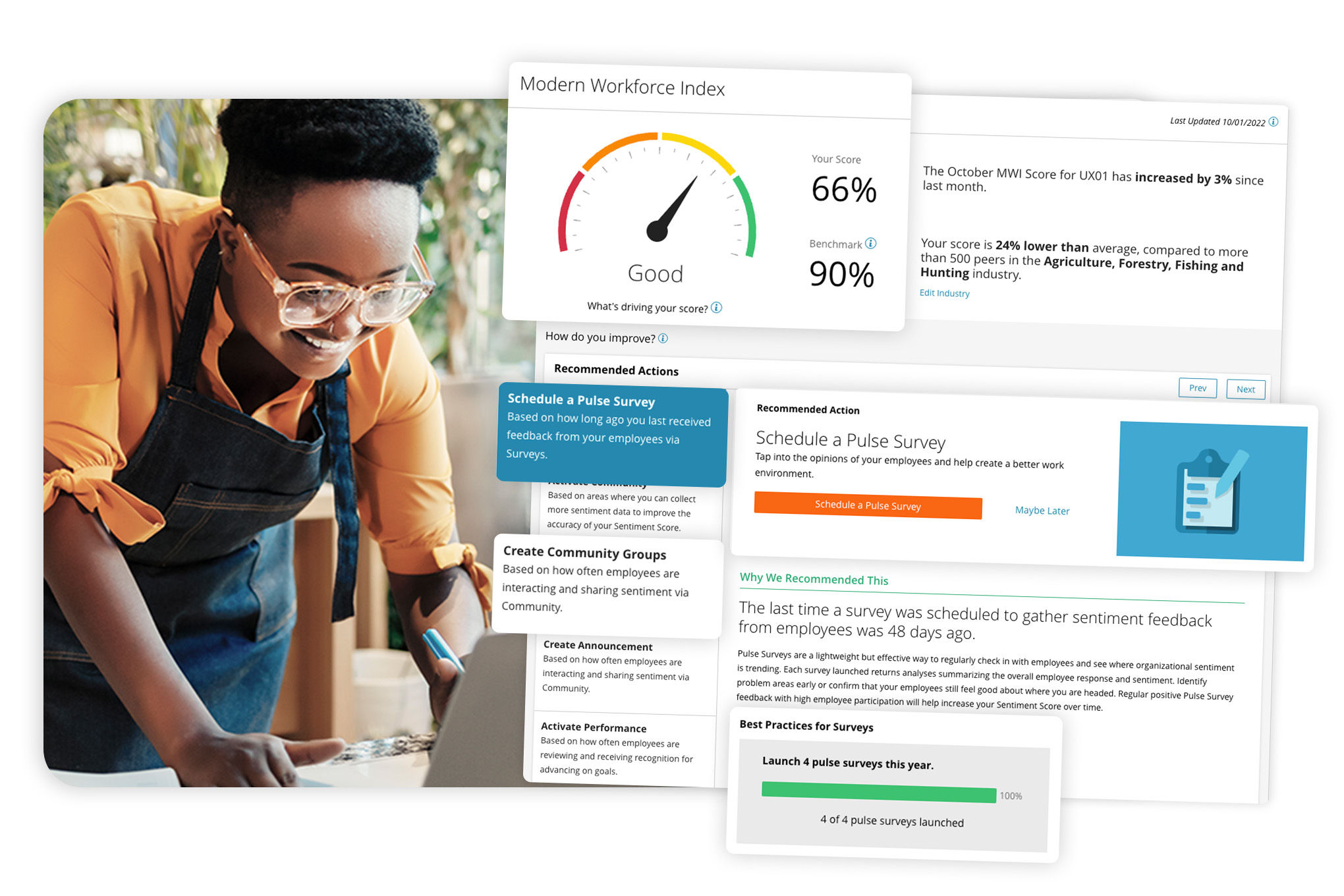Take action to build a diverse workforce with data on demographics such as ethnicity, generation, gender (legal), gender identity, and more.
HR Reporting Software
Meaningful metrics on your modern workforce.
Your workforce is evolving quickly, and it's important to understand their changing needs. Use out-of-the-box HR reporting, create custom dashboards, dig into trends, and make more informed business decisions.




Bring Your Data to Life

Foster DEIA
Quantify Utilization
Translate system usage into measurable data such as time and cost savings and employee engagement.
Plan for Changes
Understand position-level data to plan for roles, make staffing decisions, and predict changes. You can even analyze active or terminated employee counts to see turnover and change over time.
Understand Labor Costs
View a summary of labor costs and diagnose hidden overspend or top cost centers to make strategic hiring and budgeting decisions.
Increase Retention
Pinpoint at-risk employees by analyzing top turnover trends such as commute time and compensation with bubble charts to identify areas to improve retention.
Gain Impactful Insights
View real-time employee data and performance metrics to uncover and analyze trends. Even use our AI Assistant to streamline getting the information you need.

Modern Workforce Index
Stay in tune with your workforce with our MWI dashboard, built on our proprietary AI. The main dashboard highlights key insights and areas of opportunity, including details on the companies in your benchmark. Drill into sub scores, ROI calculation, and savings in the navigation, and get step-by-step tips to improve engagement.
related resources
Frequently Asked Questions
HR analytics, also known as people analytics, refers to the process of collecting, analyzing, and interpreting data related to human resources in order to make better decisions and improve organizational outcomes. Here are some examples of HR analytics:
- Recruitment analytics
- Turnover analytics
- Performance analytics
- Learning and development analytics
- Diversity and inclusion analytics
- Compensation analytics
On your dashboard, you get:
- At-a-glance visibility into the health of your workforce and employee sentiment
- Peer benchmarks based on similar-sized companies in your industry across our 35,000 clients
- Customized recommendations with easy-to-follow next steps to drive engagement
HR practitioners can use analytics to identify trends and develop strategies for improving a variety of areas related to human resources management. For example, analytics can help organizations to identify patterns and trends in employee behavior, such as turnover rates, absenteeism, and performance metrics.
This information can then be used to develop strategies to improve workforce performance and productivity, reduce turnover, and optimize employee engagement and retention. Similarly, analyzing data related to hiring trends, turnover rates, and workforce demographics can help organizations forecast future workforce needs and plan accordingly.
HR analytics can be used to evaluate the effectiveness of HR programs and initiatives to engage employees. For example, by tracking metrics related to employee satisfaction, engagement, and retention, organizations can evaluate the impact of HR programs such as employee training, wellness initiatives, and performance management.
This information can be used to refine and improve these programs, and to identify areas where additional support or resources may be needed.




